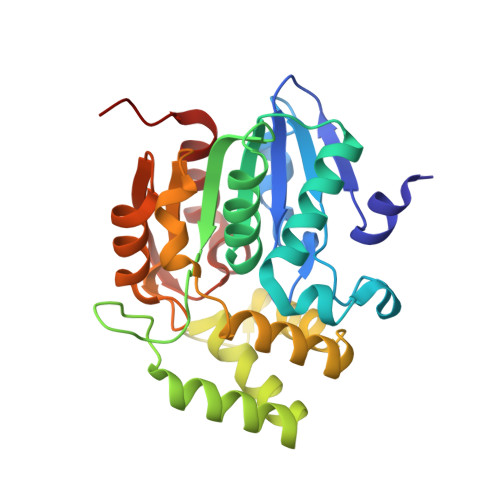Structure-function analysis identifies highly sensitive strigolactone receptors in Striga.
Toh, S., Holbrook-Smith, D., Stogios, P.J., Onopriyenko, O., Lumba, S., Tsuchiya, Y., Savchenko, A., McCourt, P.(2015) Science 350: 203-207
- PubMed: 26450211
- DOI: https://doi.org/10.1126/science.aac9476
- Primary Citation of Related Structures:
5CBK - PubMed Abstract:
Strigolactones are naturally occurring signaling molecules that affect plant development, fungi-plant interactions, and parasitic plant infestations. We characterized the function of 11 strigolactone receptors from the parasitic plant Striga hermonthica using chemical and structural biology. We found a clade of polyspecific receptors, including one that is sensitive to picomolar concentrations of strigolactone. A crystal structure of a highly sensitive strigolactone receptor from Striga revealed a larger binding pocket than that of the Arabidopsis receptor, which could explain the increased range of strigolactone sensitivity. Thus, the sensitivity of Striga to strigolactones from host plants is driven by receptor sensitivity. By expressing strigolactone receptors in Arabidopsis, we developed a bioassay that can be used to identify chemicals and crops with altered strigolactone levels.
- Cell and Systems Biology, University of Toronto, 25 Willcocks Street, Toronto M5S 3B2, Canada.
Organizational Affiliation:



















